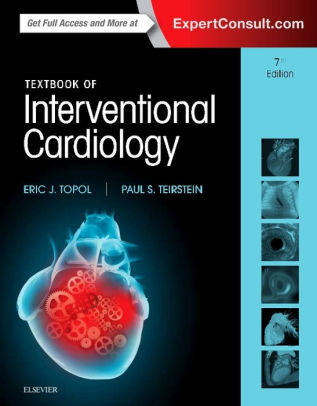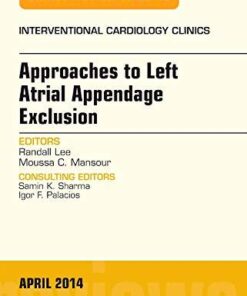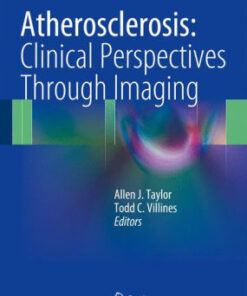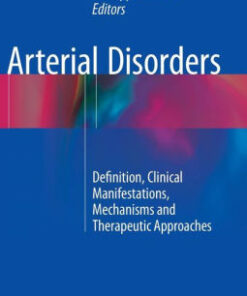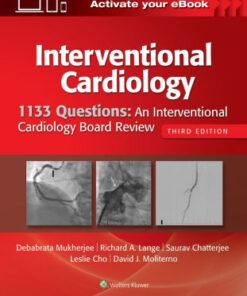(PDF) Textbook of Interventional Cardiology 7th Edition by Eric J. Topol
$42.00
Download instantly Textbook of Interventional Cardiology 7th Edition by Eric J. Topol, Paul S. Teirstein. It is ebook in PDF format.
ISBN-10: 0323340385 ISBN-13: 9780323340380
Preview
This is the PDF eBook version for Textbook of Interventional Cardiology 7th Edition by Eric J. Topol, Paul S. Teirstein
Table of Contents
Section I: Pharmacologic Intervention
1. Role of Platelet – Inhibitor Agents in Coronary Artery Disease
2. Anticoagulants and Their Use in Acute Coronary Syndromes and Coronary Interventions
3. Effects of Beta – Blockers, Calcium Channel Blockers, Nitrates, and Magnesium in Acute Myocardial Infarction and Unstable Angina Pectoris
4. Angiotensin – Converting Enzyme Inhibition and Angiotensin Receptor Blockers and Extended on
5. Thrombolytic Intervention
6. Hypolipidemic Intervention and Prospects for Regression
Section II: Coronary and Peripheral Intervention: Key Applications
7. Percutaneous Coronary and Peripheral Intervention: Historical Perspective
8. Elective Coronary Intervention: Indications, Technique and Complications
9. Percutaneous Coronary Intervention for Unstable angina
10. Complex Intervention
11. Efficacy of Percutaneous Coronary Intervention
12. Peri – Procedural Myocardial Infarction and Emboli Protection
13. Abrupt Vessel Closure
14. Catheter – Based Reperfusion for acute Myocardial Infarction
15. Chronic Total Occlusion
16. Percutaneous Intervention in Patients with Prior Coronary Bypass Surgery
17. Ostial and bifurcation lesions
18. Long Lesions and Diffuse Disease
19. Inflammation and Arterial Injury
20. Animal Models of Human Coronary Restenosis
21. Restenosis: The Clinical Issues
22. Approach to Restotic Lesions
23. Surgical Standby for Percutaneous Intervention
24. Interventional Vascular Procedures in the Peripheral, renal, Visceral and Extracranial Circulation
25. Coronary Atherectomy: Directional and Extraction Techniques
26. Rotoblation
27. Stents: Technique and Adjunctive Therapy
28. Stents: The Menu
29. Stents: Indications and Limitations
30. Coated Stents and Local Drug Delivery for the Prevention of Restenosis
31. Laser
32. Ultrasound Angioplasty
33. Radiation for Restenosis
34. Percutaneous Myocardial Revascularization
35. Angiogenesis
36. Percutaneous Bypass Surgery
37. Percutaneous Vascular Hemostatis Devices for Arterial Sealing after Interventional Procedures
Section III: Bacterial, Protozoal and Arthropod Infections
38. Interventional Approaches to the Introduction of Genetic Material into the Cardiovascular System
39. Qualitative and Quantitative Angiography
40. Intracoronary Doppler and Pressure Monitoring
41. Percutaneous Coronary Angioscopy
42. Intravascular Ultrasound
Section IV: Valvuloplasty, Congenital and Pericardial Heart Disease
43. Mitral Valvuloplasty
44. Advances in Percutaneous Aortic and Mitral Valvuloplasty
45. Congenital Heart Disease
46. Percutaneous Balloon Percardiotomy for Patients with Pericardial, Effusion and Tamponade
47. Catheter Based Treatment for Patients with Hypertrophic Obstructive
Section V: Outcome Effectiveness of Interventional Cardiology
48. Medical Economics and Interventional Cardiology
49. Quality of Care in Interventional Cardiology
50. Training, Credentialing and Guidelines
Section VI: Emerging Technologies
51. Device Genomics
52. Stem Cell Therapy for Ischemic Heart Disease
53. Detection of Vulnerable Plaque
